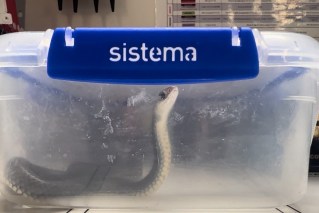The fibre of our wellbeing: The surprising truth about gut health


Caring about ‘gut health’ seems trendy, but how much do we actually know about taking care of our tummies? Photo: Getty
The rise of kombucha, kimchi and other fermented products said to improve gut health is a triumph of marketers trampling all over the science.
This is made clear in a new report from the CSIRO, Australia’s science agency, Gut health and weight loss – An overview of the scientific evidence of the benefits of dietary fibre during weight loss.
In the last 10 to 15 years, research tools have allowed scientists to get a better understanding of what fibre actually does for the human body – apart from soaking up water and softening our stools.
There has also been a better understanding, and greater public awareness, that our health is in good part determined by the quality of bacteria in our gut – known as the gut microbiome.
Food companies blindly jumped in
This explains the flood of probiotics and fermented products offering to fill you up with friendly bugs. But it’s not how the body works.
As Dr Damien Belobrajdic, CSIRO research scientist and one of the authors of the report, told The New Daily, most of the bacteria in a plate of fermented cabbage or yoghurt “would be destroyed in the stomach”. It doesn’t reach the large intestine where the health-supporting fermentation takes place.
This is where fibre comes in.
“Fibre escapes digestion in the small intestine,” said Dr Belobrajdic.
“Once in the large intestine, microbes start to break it down. This leads to fermentation and an increase in favourable bacteria, which leads to benefits … systematically across your whole body.”
The fibre that works most effectively against the onset of colorectal cancer is resistant starch: cooked potatoes, rice and pasta that benevolently changes structure – and loses calories – as it cools.
Fibre and cancer
The benefits of resistant starch for weight loss have been spruiked by wellbeing gurus, but the fact that it’s a powerful form of fibre – and a cancer prophylactic –has been less discussed.
There are four types of fibre with specific benefits, and the CSIRO is urging Australians to eat more of all of them.
They are:
- Soluble fibre: the laxative type of fibre that comes from oats, barley, psyllium husks (commonly used in dietary breakfast cereals) and lentils
- Insoluble fibre: from wheat bran, rice bran, nuts, seeds and wholemeal bread
- Readily fermentable fibre: leeks, Jerusalem artichokes, legumes and onions
- Resistant starch: chickpeas, kidney beans, under-ripe bananas and those cooked potatoes
- The daily recommended intake for fibre has long been 30 grams for men, and 25 grams for women
But Dr Belobrajdic said this only amounts to getting a laxative benefit. To enjoy the gut health benefits of fibre, he said we should be eating 40 grams or more a day.

The humble cold baked potato keeps fermenting as it travels through the large intestine, serving to stave off colorectal cancer. Photo: Getty
“But the main problem is most Australians aren’t even making the daily recommended level.”
As a consequence, one in seven Australians is experiencing gut distress symptoms – and the general lack of fibre is no doubt putting a strain on the national constitution.
Accompanying the new report, which is easy to read and freely available, the CSIRO has developed a free online tool for people to evaluate their gut health.
In keeping with the CSIRO’s recent prolific move into diet books, the researchers have published a 12-week online weight loss and gut health program, Total Wellbeing Diet for Gut Health, for $199, complete with recipes and testimonies of the sort you tend to find from the likes of Jenny Craig.
However, The New Daily, asked Dr Belobrajdic to put together a sample day’s eating to give readers a clue as to how much fibre different foods contain and what they need to eat to get an adequate dose.
To meet a daily fibre target of 40 grams, Dr Belobrajdic suggested:
- Rolled oats 60g – 7 grams fibre
- Wholemeal bread, 2 slices – 4.8 grams fibre
- 1 slice sourdough bread – 2.5 grams fibre
- 1 pink lady apple – 3.9 grams fibre
- 12 strawberries – 3.6 grams fibre
Five serves of vegetables, eaten in a salad with lunch and vegetable stir fry for dinner:
- Broccoli (1 cup) – 3.4 grams fibre
- Carrot (1 cup) – 4.6 grams fibre
- Corn (1 cup) – 9.8 grams fibre
- Tomato (1 cup) – 1.8 grams fibre
- Rocket (1/2 cup) – 0.65 grams fibre
Total for the day – 42.2 grams fibre
Dr Belobrajdic suggested: “Adding a legume to one of the meals would add 3 grams fibre per 50 grams of legumes consumed.”








